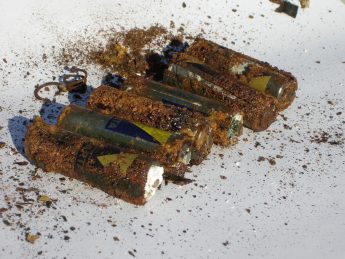Intro
Quick Navigation
Nothing is more annoying than a car stopping in the middle of nowhere. It gets worse when you don’t even know the cause of the problem. Sometimes, it makes you wonder why you bought that particular car in the first place because you could have been saved from the embarrassment.
More often than not, batteries are the main cause of situations like this. They are quite complicated but not so difficult to diagnose. Before a battery stops working finally, it must have given advance notice or signs that you need to replace it. Surprisingly, not many pay attention to the bad battery symptoms until the car stops working.
If you belong to that category of car owners, this article will educate you better on car/battery maintenance and care.
Question
How to Know a Bad Battery?
Machines are built with several parts for full operation; every part works together for an excellent performance. In a situation where one of the machine’s part fails, it affects others and, ultimately, the machine itself.
This logic applies to cars. Batteries are significant, but when it stops working, every other thing stops. Then, what are the warning signs to know a bad car battery?
- Sluggish Cranking Engine
If you buy a good car, you know that the engine is fine from the way it sounds. An ideal car engine starts within 5 seconds of ignition; however, it becomes slow when the battery gets bad. Accompanying the slow ignition is a difference in its sound that explicitly describes a dying engine.
Likewise, when you turn the key in the ignition, a mechanical response is transmitted from the battery to the electrical component (starter solenoid) of the car to function. With a dying battery in a car, the electric current passed to the starter solenoid becomes weak, making a clicking noise.
- Electrical Malfunctions
A battery powers the electrical components of a car. It is often said that battery life depends on how many electronics you use on every journey. If your battery is dying, you may start to notice some malfunctioning. One of many is dim headlights. It is a noticeable feature because it would be different, weaker as each day goes by.
With a dim headlight, your safety is threatened. Sometimes, you will find it difficult to drive in the dark. The problem isn’t changing the bulbs; instead, replacing the battery with another is the solution. Other electronic malfunctions include a weak AM radio signal, poor charging performance of devices, etc.
- Random Operation of Accessories
A damaged battery doesn’t skip car accessories. You would be surprised to see that some accessories start operating independently without being controlled. When you notice these signs, it would be safe not to assume that it is faulty because most of the time, the battery is responsible.
The random operation of accessories includes:
- A reversal in the power door lock mechanism
- Power windows work on the contrary
- Unnecessary Car alarm activation
- The stereo malfunctions
Depending on the car you drive and the accessories it has, you will notice several mishaps. Eventually, it would harm you and your passenger’s safety if not fixed immediately.
- Swollen/Leaking Battery with Bad Smell
In worst-case scenarios, your battery starts showing symptoms that are quite embarrassing and irritating. Usually, a car battery contains Lead Acid constituents; an alteration of these constituents could result in them being exposed. If a car battery stays damaged for too long, it cracks or swells. Eventually, the content leaks, causing an irritating smell.
Another significant thing you would notice when all these happen is the corrosion of the connectors. The battery’s metal parts become white or ashy. The consequence of this corrosion/discoloration is a fluctuation in its voltage. If not fixed on time, it could affect different parts of the car indefinitely.
- Frequent Jumpstart: Auto Start/Stop Failure
Most drivers try to stay economical by not burning fuel in traffic. They turn off the engine and press the brakes; it is turned on and released when there is movement. In a situation like this, with a bad battery, you may constantly have to jumpstart. The Auto Start/Stop Failure is quite common and embarrassing. It is indeed a symptom of a bad battery.
What Happens After Discovering You Have a Bad Battery?
When you discover you have a dying battery, there is no other thing to do than changing it as soon as possible. A car’s functionality is dependent on its powerhouse, i.e., battery. It is almost easy to say that the car would be useless until you replace the battery.
If you cannot replace the battery yourself, you should call a professional. Sometimes, it is ideal to do the latter so that these professionals can run diagnostics on your car. Who knows, maybe they would find other things wrong with it, like a bad alternator?
How Do You Take Care of Your Battery?
Taking care of your battery, as well as other car parts, is a responsibility. It is not only one of the most significant parts to keep the car moving but also ideal for power electronics. There are a couple of things you need to do to keep your battery in good condition, irrespective of the factors that could cause discharge or damage‘.
Be intentional about checking your battery every week. When you start to notice changes in its components –slight corrosion in its connectors, you should get ready for replacement.
Always check the acid level. If the acid level is too high (i.e., low electrolytes), balance with distilled water. Read on adding water to car battery‘.
Ensure to clean the battery frequently and conduct a load test.
Make sure the battery is warm, especially in cold weather. You shouldn’t also leave your car in a position for too long so that the battery won’t get discharged and damaged, eventually.
Conclusion
Now that you are aware of bad battery symptoms, you should check your car immediately and figure out what is wrong. If none of these apply, you should consider checking-in with a mechanic.


